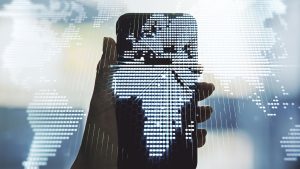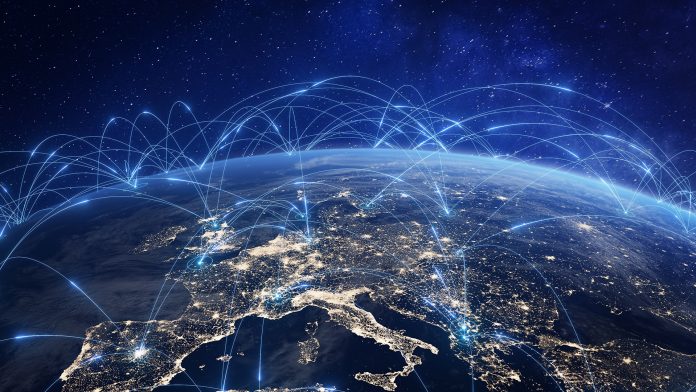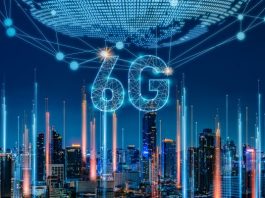Craig Bowley, Regional Vice President, EMEA, ST Engineering iDirect, discusses the potential for reliable connectivity in Africa and its importance in the digital age.
Somewhere in West Africa, Russ Cook – also known as ‘The Hardest Geezer’ – a British man from Worthing, is pushing his body to the limit to become the first person ever to run the entire length of Africa, and all for charity. To put it into perspective, that’s over 360 marathons.
Having started his mission in February, Russ has run over 9,500 kilometres and raised over £100,000 for charity, aided by the hundreds of thousands of fans eagerly following his journey since his story first went viral.
Russ’ time on the run has been far from a walk in the park. In addition to the expected issues arising from such a physically demanding challenge in extreme temperatures, Russ has encountered passports, cameras and cash theft while battling an often overlooked hurdle – reliable connectivity.
Reliable connectivity is necessary for safety, ensuring swift communication is possible in emergencies. For Russ, whose charity donations stem from his following on social media, keeping his nearly 475,000 followers updated regularly is also important.
Yet, this has been a challenge in a continent where just 33% of its population has access to the Internet. Impressive as his accomplishments are, Russ’ journey across several countries has also brought attention to the deepening digital divide in Africa, where as little as 6% of rural areas are said to have access to some form of digital connectivity.
Poor connectivity can be significant and wide-ranging for those living in these communities, hindering educational and economic development.
Reliable connectivity: The current status
Progress is being made to enhance reliable connectivity options, particularly in Africa’s mobile telecoms space, which, according to the African Development Bank, is the fastest-growing market in the world.
There were 489 million unique mobile subscribers in Africa in 2023, and behind the scenes, there have also been continued efforts to pilot 5G programmes around the continent.
Yet, according to the World Bank, only 36% of Africa’s population currently has broadband internet access, with a profound disparity between online access for residents residing in urban and rural locations remaining.
In Central Africa, 39% of the population lives outside a mobile broadband coverage area. At the same time, comparably, this figure sits at 16% for West Africa, 13% for East Africa, and 12% for Southern Africa.
The real-life impact
While these statistics are damning, the real-life impact of poor connectivity is even more so. It limits rural residents’ access to news, educational resources, and medical information to name a few.
Access to online educational material is pivotal for young people standing a chance of equal progression in today’s digitally-driven world. Current statistics show that 90% of children in Africa leave school without learning any basic digital skills – limiting both individuals’ career paths and the growth of the economy.
Google itself identifies that Africa’s digital economy could be worth $180 billion by 2025 but cites that this relies upon a significant investment in digital expertise. Without students being able to connect to the Internet to learn, develop and test their digital skills, this goal may remain a pipe dream.

Poor connectivity can also impede access to telemedicine services and health information, proving critical in emergencies when timely access can make all the difference.
More widely, according to the United Nations Development Programme, digital health provides an opportunity to develop African health systems, given the high penetration rate of mobile phones and usage.
Benefits of reliable connectivity include better patient care and increasing the number of health workers through e-learning, which is critical in Africa, where there are only 0.21 doctors for every 1,000 people, according to World Health Organisation (WHO) data.
Yet, again, unlocking these benefits relies on the right digital infrastructure.
The solution
Finding and implementing a far-ranging solution is no easy feat, with wider infrastructure developments in telecoms provisions required for one and challenges like changing legislations, rising high adoption costs, and conflict in nations to contend with.
Nevertheless, recent examples prove progress can be made to overcome the digital divide, providing hope for the wider continent.
Peru is one country outside of Africa that has similarly not historically experienced the benefits of reliable connectivity. As recently as 2020, only 60% of Peru’s 30 million citizens were connected to the Internet, with the Peruvian Government facing the challenge of expanding access in areas with lower population density.
In 2023, ST Engineering iDirect worked with DIVICAM to deploy the SKYflow ecosystem to deliver OTT (over-the-top) video and documents to remote regions of Peru. This connectivity would enable residents to access previously unavailable public content, including educational content and telemedicine.
SKYflow’s native IP over the satellite ecosystem offers cost-effective, ultra-fast, and low-latency live video delivery to mobile devices.
Owing to this solution, 100% of the Peruvian population will be able to receive DTH (direct-to-home) content and have access to live content that can be recorded.
Closer to home, in the DRC (Democratic Republic of Congo), the Internet penetration rate sat at approximately 3% pre-pandemic, with the country still developing its 4G and 3G networks.
Vodacom, the largest mobile network operator in the country, selected ST Engineering iDirect and partner Gilat Telecom to install and commission two Dialog hubs to power cellular backhaul services across the region for applications such as social media, video sharing and conferencing platforms, as well as data transfer applications.
Access to these applications has already had a profound impact on remote communities like the DRC – giving communities the ability to stay up-to-date with the latest local and global news.
Through innovation and optimisation, leaders and technology providers are making important progress to help rural communities and individuals access reliable connectivity.









